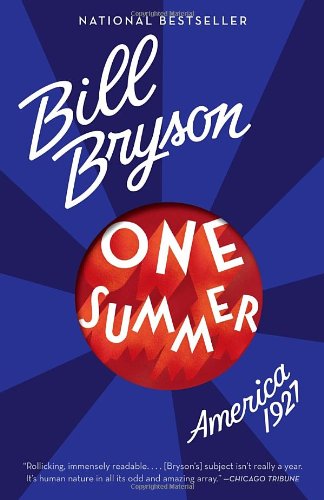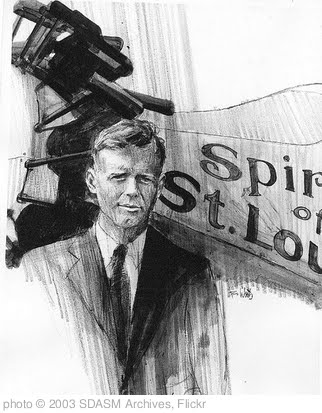During the extended summer of 1927 (May through the end of September):
On May 21, 1927, Charles Lindbergh crossed the Atlantic in The Spirit of St Louis and became the most famous man on the planet.
Babe Ruth hit sixty home runs, a season record that stood until Roger Maris hit 61 home runs in 1961.
Lou Gehrig hit 47 home runs, more than any other player had ever hit in a season, apart from Babe Ruth.
Zane Grey and Edgar Rice Burroughs were the most popular American authors, and perhaps the most prolific.
Alvin “Shipwreck” Kelly sat on top of a flagpole in New Jersey for 12 days and nights, a new record.
Al Capone enjoyed his last summer of profiting from crime and Prohibition in Chicago.
The Jazz Singer with Al Jolson, the first “talking picture”, was filmed.
Television was created, and radio came of age.
President Coolidge vacationed in South Dakota and announced that he did not choose to run for president again in 1928.
Sacco and Vanzetti were executed for crimes they may or may not have committed.
Work began on Mount Rushmore.
It rained a lot, and the Mississippi River flooded as it never had before. (River Rising by Athol Dickson is a wonderful historical fiction novel set during and after the Mississippi River flood of 1927.)
A madman in Michigan blew up a schoolhouse and killed forty-four people in the worst slaughter of children in American history. (School violence is not new.)
Henry Ford stopped making the Model T, but promised a new “Model” soon.
All these events and trends and more are chronicled in Bill Bryson’s One Summer: America, 1927. The book may have begun as a book about Charles Lindbergh or alternatively about Babe Ruth, since those two celebrities figure large in the story. But perhaps as Mr. Bryson did his research, he found much more of interest to write about in that summer of 1927.
I looked at my archives and found that lots of other things were going on in 1927:
Betty Macdonald and her husband were trying to make a go of a chicken farm near Chimacum, Washington.
L.M. Montgomery published the last of her Emily book, Emily’s Quest.
The first Hardy Boys book was published.
Continued civil war and unrest rent Ireland.
Socialist tried to overthrow the government in Austria.
In December, Duke Ellington opened at The Cotton Club.
Anyway, if you’re interested in narrative nonfiction about the events and personalities of 1927, I can highly recommend Bill Bryson’s hefty tome. It’s not exactly light reading, but it is written with a light touch—and a sense of humor.






